
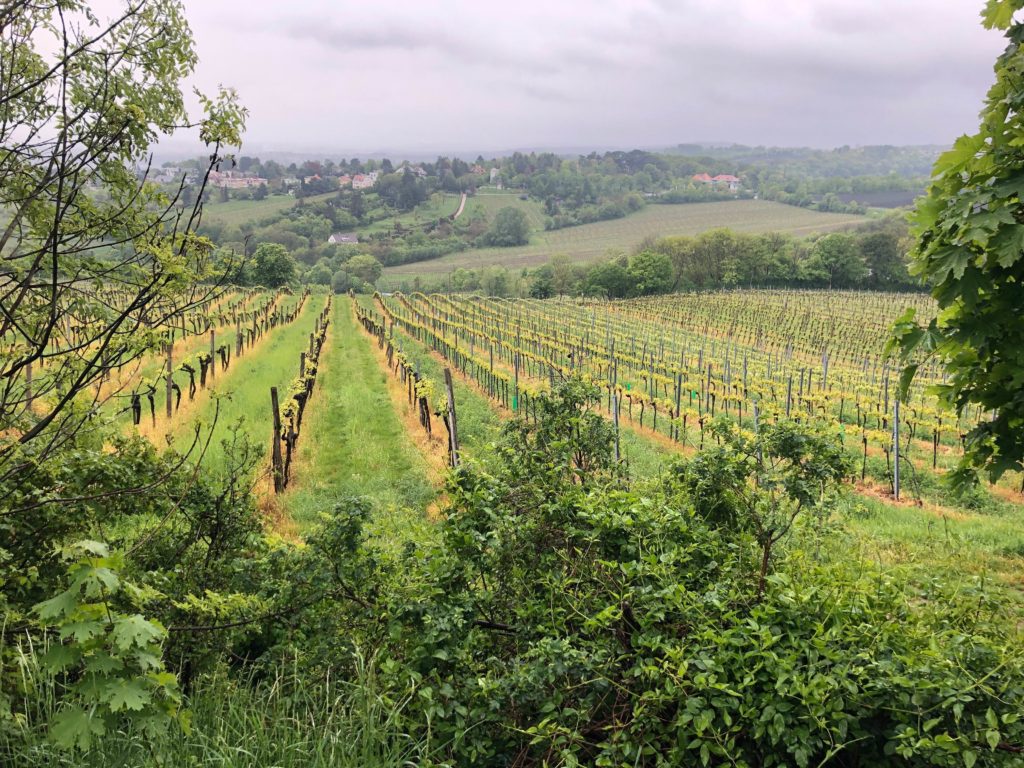
Vienna regularly tops the list of the world’s most liveable cities and I can’t help but think that having hundreds of wineries right on its doorstep might be a contributing factor. Despite modern Vienna’s status as a major metropolis, its residents are no stranger to grape vines; for centuries they have been an almost daily part of life and were even cultivated within the city walls until the late Middle Ages. Today there are almost 700 hectares of vineyards within the city limits. The famous sub-regions of Bisamberg and Nussberg form links in a great green chain that wreaths the city, a vista that is both beautiful to the eye and exciting to the palate.
The slopes that garland the city and suburbs are a verdant tapestry of every green in the book; trails and tracks climb over forested hillocks then gently wind through valleys of bravely disciplined vineyards clinging to the undulating landscape. It only took fifteen minutes to get from my hotel in the centre of town to the foot of the Kahlenberg hill whose city-facing slopes make up the Nussberg sub-region.
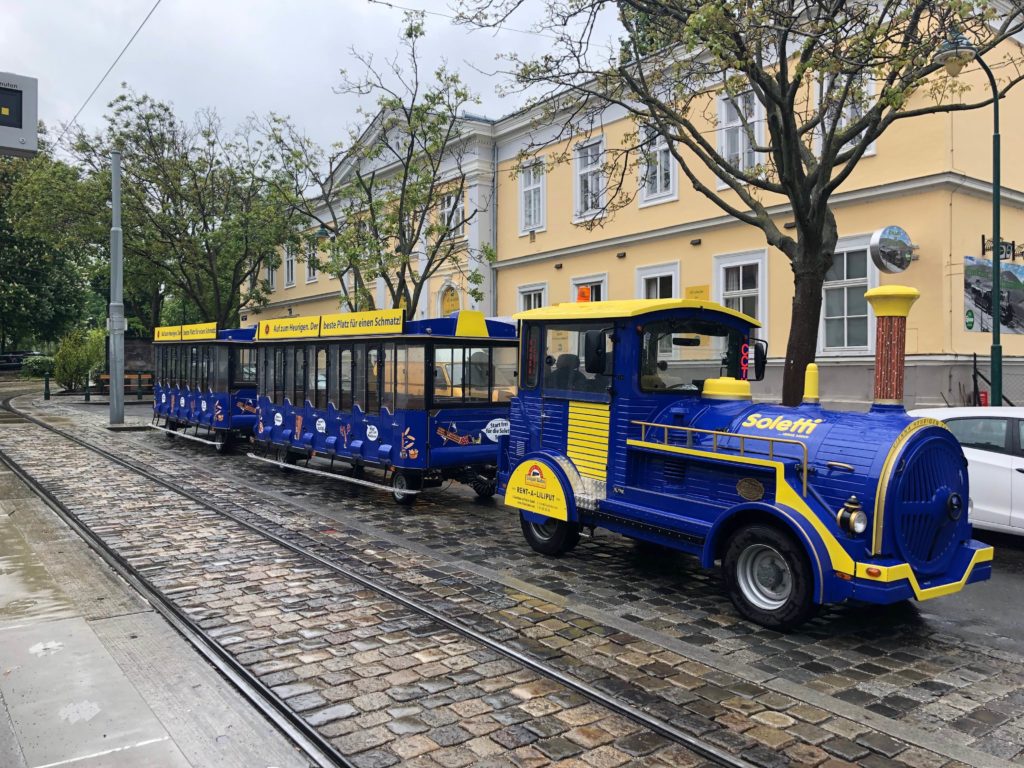
Here I paid the modest fee of five euros to jump aboard the Heurigen Express which clattered its way up the tight switchbacks until we reached the summit. The full route takes the Heurigen Express through several villages and small towns, eventually returning to Nussdorf; but the view of the city and surrounding woods compelled me to jump off and stare for a while, and as the rest of the loop was all downhill from there, I decided to complete the circuit on foot.
The vintners of Vienna have been blessed in that the region is capable of growing a wide range of varietals, and this flexibility was of tremendous help to early winemakers who planted many different varietals in the same vineyard as insurance against unpredictable ripening conditions. The fruit of these different varietals would be co-picked then co-fermented into a fresh but simple and inexpensive wine. This field blend went on to be called Gemischter Satz and would become the signature style of Viennese wine, being consistently and reliably delicious.
Until about 15 years ago, Gemischter Satz was not always given its due recognition as there were those who dismissed it as being merely ‘tavern wine’. However, for the Viennese vintners who tweaked and tinkered with their pet style, and who worked hard and persisted, the reward came in 2013 when the ‘Wiener Gemischter Satz’ achieved formal DAC status. Today, the wines that carry this DAC status are as elegant and sophisticated as those to be found in the swanky regions, but these wines have not forgotten that their roots or natural habitat lies in the heuriger.
A heuriger or wine tavern is a Viennese institution; for generations the only way a small producer was able to sell their product was to build their own tavern where they would serve their wines with platters heaped with cold meats, cheeses and pickles. Over time some evolved to offer warm food and even buffets and on the day I arrived one heuriger was serving up a full spit-roasted pig! Regular readers will know there is little I won’t do for roast pork and on this day I discovered I left my moral compass in Australia when I expertly crashed an 80th birthday party and shamelessly tucked into more crackling than was seemly. I am not proud of my actions but I regret nothing!
Today the hills and suburbs surrounding Vienna are peppered with heurigen that run the spectrum from timber shack to fine dining but one thing is constant: The heuriger is a place for groups of friends or extended families to let their hair down. The famously reserved Austrians’ volume increases, their smiles widens and hard edges soften.
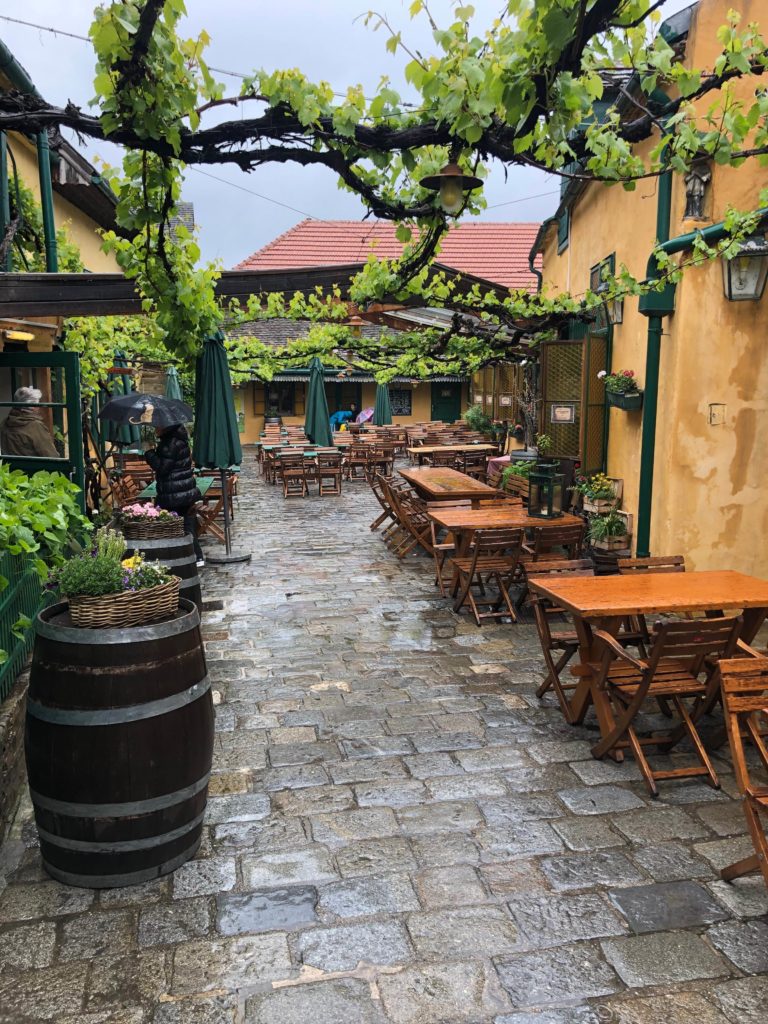
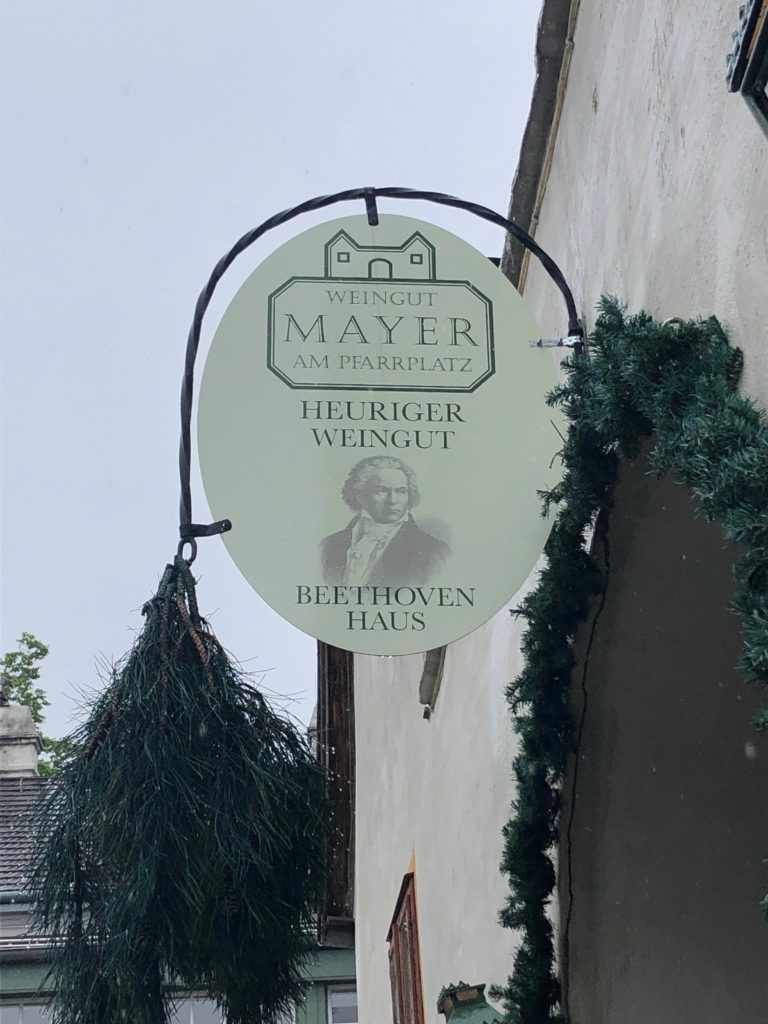
Mayer am Pfarrplatz in the outer suburb of Heiligenstadt is typical of the smarter style of heuriger with a central courtyard lined with picnic-style tables and benches surrounded by dining rooms and a small museum dedicated to Ludwig van Beethoven, who stayed on the property in 1817. At that time there was also a sanatorium in Heiligenstadt which Beethoven visited regularly in hopes of finding relief for his deteriorating ear condition. It was during this time that he worked on his Ninth Symphony. A connection to the region’s most famous son is claimed by several heurigen in the region; Beethoven’s ghost is even said to be a regular visitor in the heuriger of Schubel-Auer which is only two doors down.
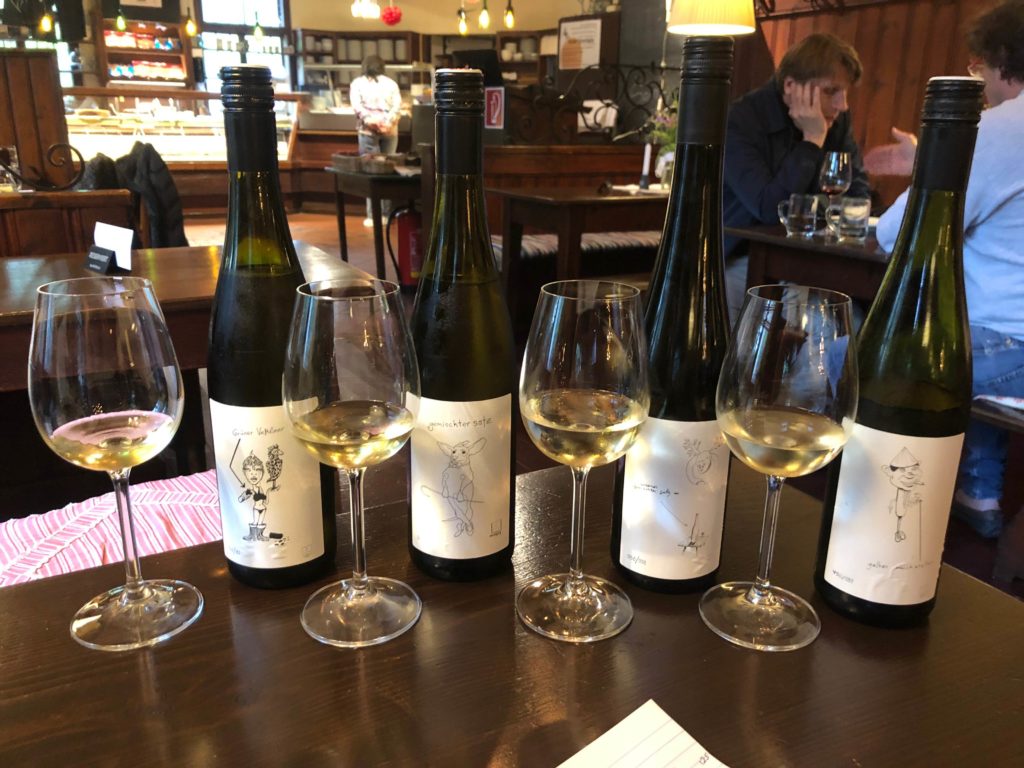
Schubel-Auer is a casual and cosy heuriger owned by a husband and wife team who form the tenth generation to run the business which is in its 308th year. The wines are all delicious but I would like to single out their Gelben Muskateller which hypnotized me with waves of rose water, apple and lime.

The heurigen’s significance to Viennese culture cannot be overstated and no trip to Vienna would be complete without a visit to Edlmoser winery, which was recently recognised as the best heuriger in Vienna by Falstaff magazine. Current custodian Michael Edlmoser greeted me at the door and treated me to flight after flight of his beautifully crafted and considered wines. I arrived on a busy night and the dining room was energized by people of a common purpose: To relax and enjoy themselves over platters of deliciously roasted meats with the ubiquitous potato salads and the fruits of Michael’s hard work in the winery.
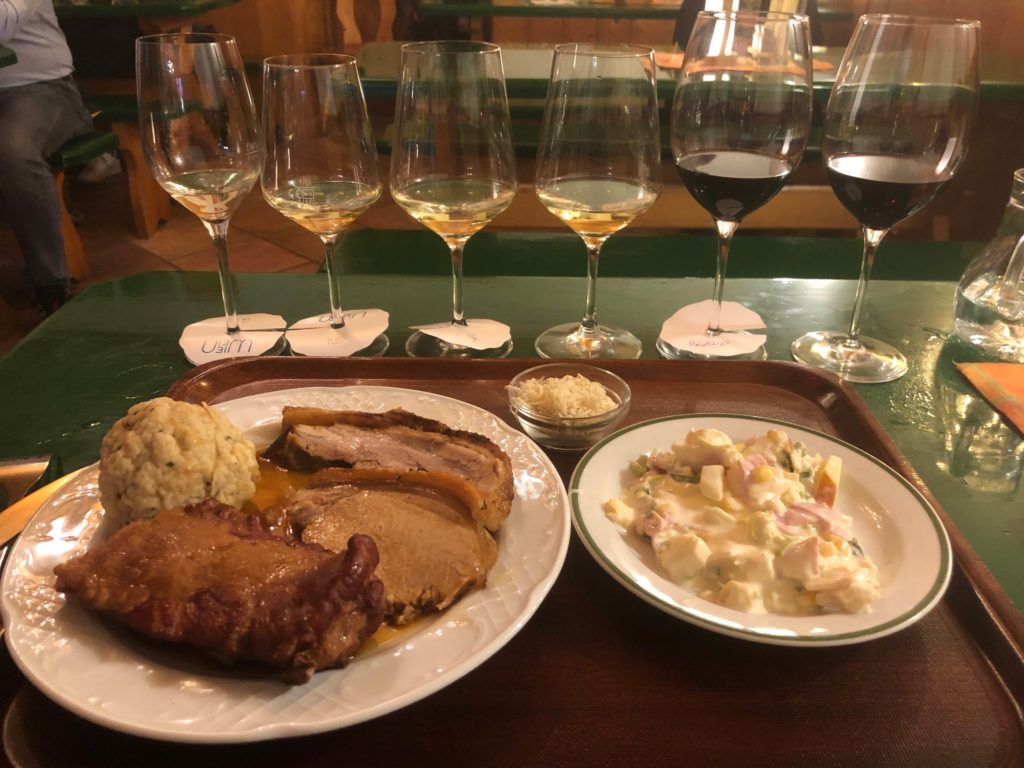
The Edlmoser vineyards are to the south of the city where red grape varieties thrive and where Riesling and Gruner Veltliner are prized. The Gemischter Satz wines reflect this and are leaner and more acid driven than the Muskateller-dominant styles to the north. Here I tasted exciting wines so razor sharp I could shave with them through to opulent and generous wines that I could easily believe were more sunlight than grape. But such hyperbole would only embarrass Michael Edlmoser who would much rather discuss what music to pair with his wines and who completely rejects what he sees as just the highbrow bollocks of wine journalism. I very much enjoyed my evening at the Edlmoser heuriger and can see why the whole package is so highly regarded.

The sub-region of Bisamberg is relatively small but rich in geological variety; loess, shale, glacier ground gravel and compacted ancient sea shells are all tugging on the thin quilt of top soil. It is this mix of mediums that gives the fruit grown here a distinctive acid and floral aromatics, characteristics prized by Rainer Christ of Christ winery and heuriger. Here the modern seamlessly complements the traditional in every way; the winery is state of the art but also deceptively low-tech. The fruit and must progress through five expertly designed climate zones without ever seeing a pump; gravity is the master here and the result is wines of quiet power and subtle authority.
Gemischter Satz forms the heart of the portfolio with several examples being among the best I have tried; I was especially smitten with the Bisamberg Gemischter Satz DAC, from the Ried Wiesthalen vineyard. White blossom and ripe orange spring from the glass while toasty, nutty rye bread notes stroll in at their own pace. The vineyard is over 70 years old and is thought to be planted with over 10 varieties; no one is quite sure, but one thing is certain, I want more.
Originally home to fresh cheap wines that were served ice cold in large carafes as soon as possible to the ordinary people of Vienna, the heuriger evolved over the past 100 years to become an integral element for everyone in any successful spring and summer. Long afternoons sipping Gemischter Satz in the sun with friends and family has become as essential to the Viennese as enjoying wiener schnitzel, and while the heuriger is not a uniquely Viennese venue, it is they who have mastered it. An afternoon spent sipping, munching and chatting in a heuriger is good for the soul, and I have already pencilled in several more to visit on my next trip.
The Vienna wine region is rich and varied; several sub-regions that sit on a myriad of soil types has gifted its winemakers with a broad palate from which to paint wines that have stood the test of time. I have long been a fan of field blends and I can now confirm that Vienna Gemischter Satz sits at the zenith of the style.
